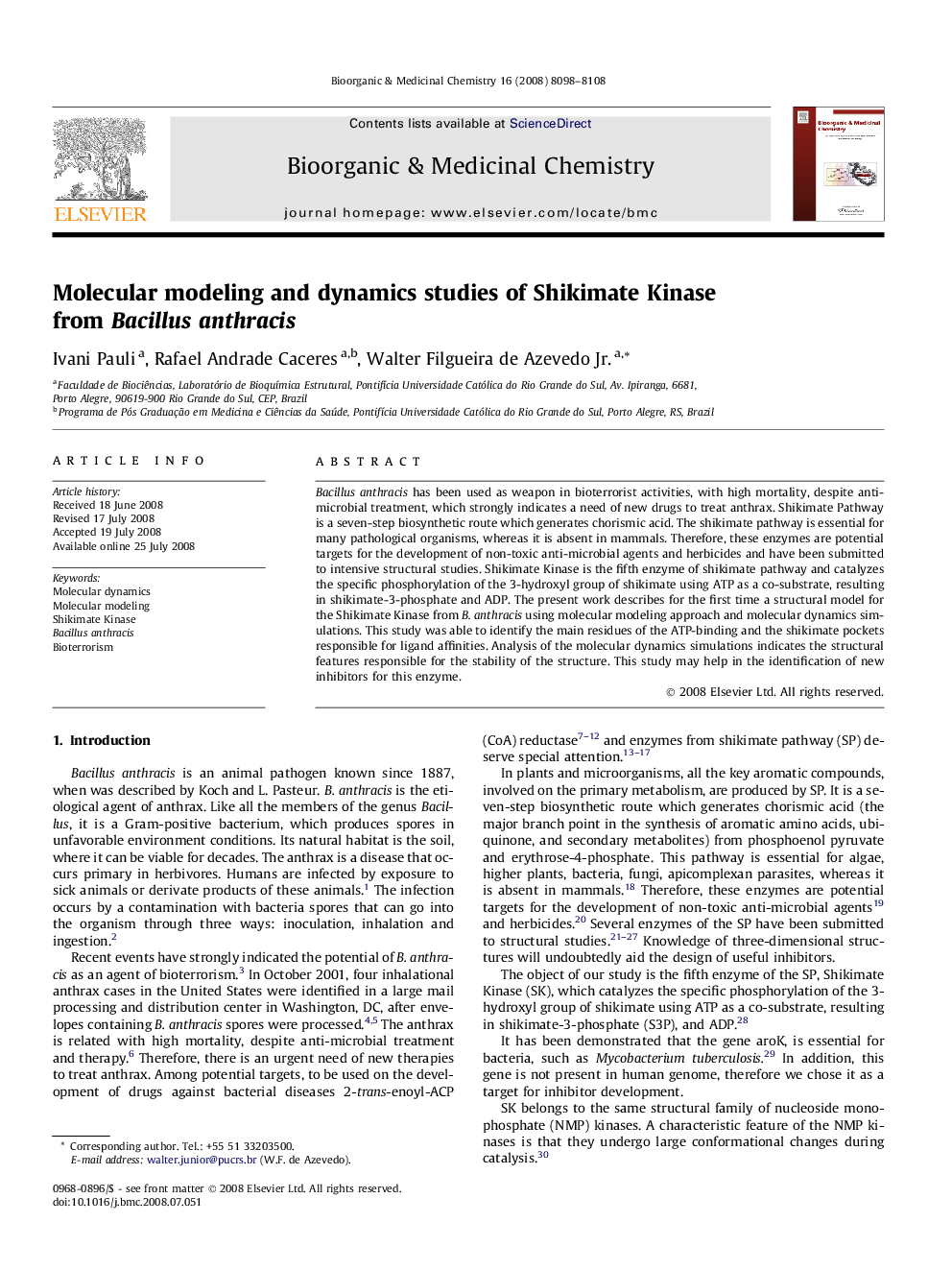| کد مقاله | کد نشریه | سال انتشار | مقاله انگلیسی | نسخه تمام متن |
|---|---|---|---|---|
| 1360510 | 981438 | 2008 | 11 صفحه PDF | دانلود رایگان |

Bacillus anthracis has been used as weapon in bioterrorist activities, with high mortality, despite anti-microbial treatment, which strongly indicates a need of new drugs to treat anthrax. Shikimate Pathway is a seven-step biosynthetic route which generates chorismic acid. The shikimate pathway is essential for many pathological organisms, whereas it is absent in mammals. Therefore, these enzymes are potential targets for the development of non-toxic anti-microbial agents and herbicides and have been submitted to intensive structural studies. Shikimate Kinase is the fifth enzyme of shikimate pathway and catalyzes the specific phosphorylation of the 3-hydroxyl group of shikimate using ATP as a co-substrate, resulting in shikimate-3-phosphate and ADP. The present work describes for the first time a structural model for the Shikimate Kinase from B. anthracis using molecular modeling approach and molecular dynamics simulations. This study was able to identify the main residues of the ATP-binding and the shikimate pockets responsible for ligand affinities. Analysis of the molecular dynamics simulations indicates the structural features responsible for the stability of the structure. This study may help in the identification of new inhibitors for this enzyme.
Complexes of BaSK were modeled with natural substrates in different conformational states due ligand-binding. Molecular dynamics simulations have been performed to evaluate structural and dynamical properties of BaSK.Figure optionsDownload as PowerPoint slide
Journal: Bioorganic & Medicinal Chemistry - Volume 16, Issue 17, 1 September 2008, Pages 8098–8108